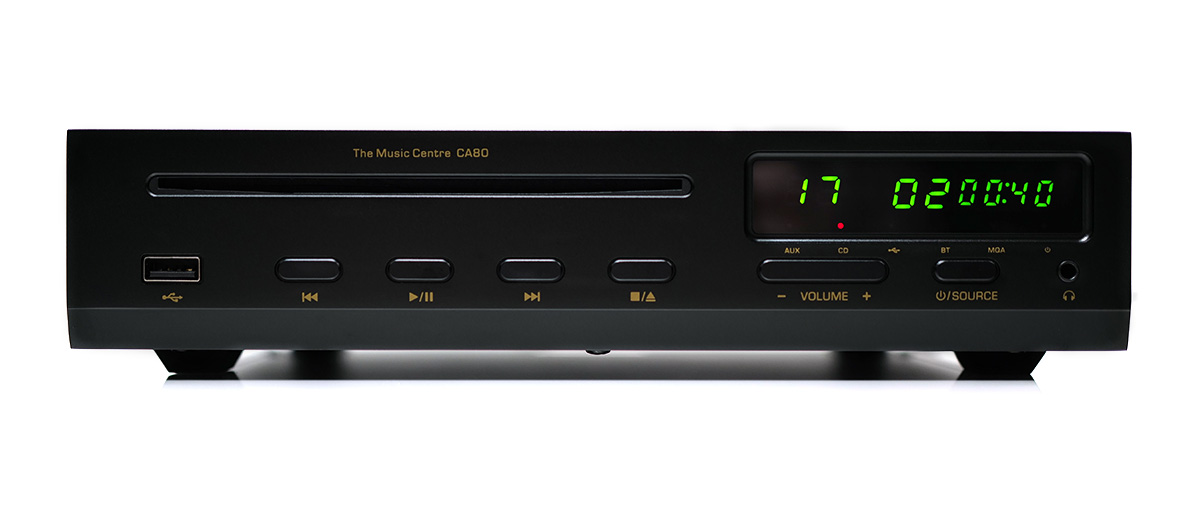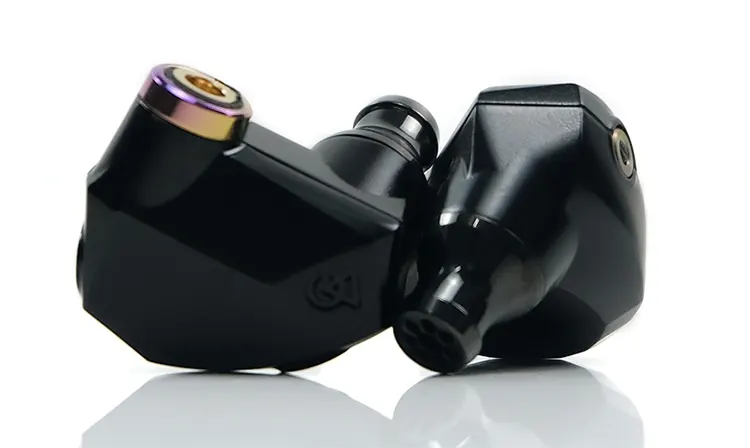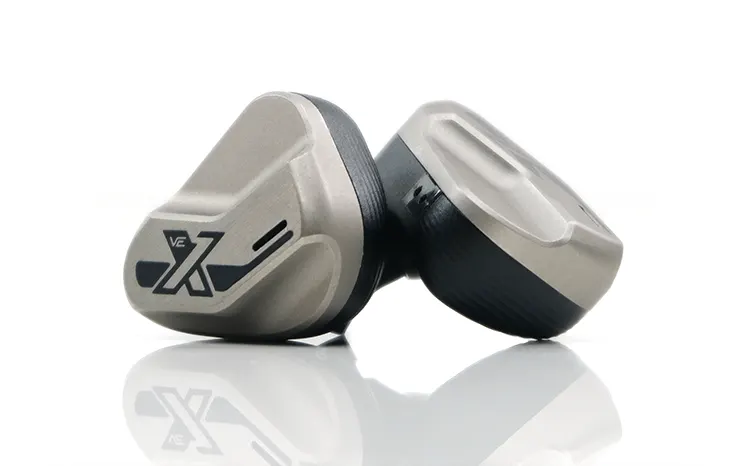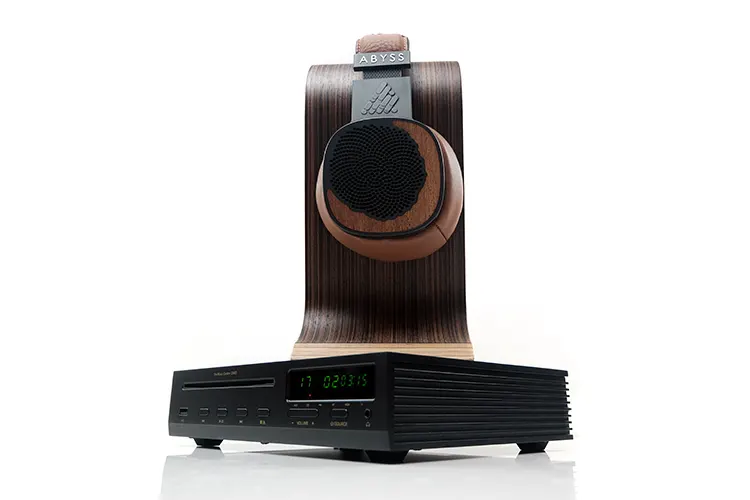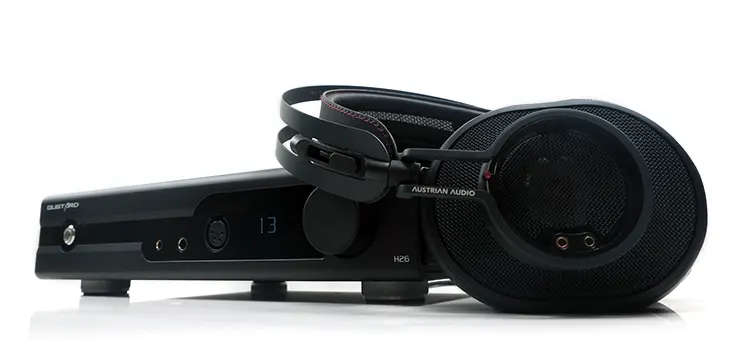Sound Impressions
The following sound impressions of the Shanling CA80 were completed using a mix of the PMG Audio Apx, Vision Ears VE10, and the Austrian Audio Composer on a direct PO connection and via a SE LO to a Ferrum OOR headphone amplifier.
Summary
Ranged against similarly priced players, the CA80 delivers a smooth and natural tonal quality to its PO with a degree of that transferring across via its LO to the various amplifiers I tested it with.
It is an easier listen compared to the brighter sound signature of the competing SMSL PL200, slightly richer in tone when ranged against Cayin’s Mini-CD MK2, but more neutral and dynamic sounding if you are planning to upgrade from the warmer coloration of its smaller EC-Mini sibling.
IEM pairings offer the best performance from its 3.5mm TRS PO. It’s not the most powerful of outputs but the background is clean and via the Eddict app you can switch to a higher gain if required for more demanding IEMs rather than drag the volume up too high.
That said, most IEMs tested did not go over 30/99 for volume with the default gain level sounding quite lively and more impactful than my previously reviewed EC-Mini presentation with the same IEMs.
Headphones are more challenging. The coloration is consistent from IEM to headphones rather it is the weaker PO power leaving most headphones tested sounding a bit walled-in and lacking in depth and sub-bass power. I would use a dedicated amp with the lineout from the CA80 to achieve satisfactory results.
The lineout is excellent with amplifiers such as the Ferrum OOR and ZMF Headphones’ Homage. The richer denser quality of the CA80’s amplification marries well with the OOR’s neutral and punchy character creating a very balanced tonal quality.
The Homage tilts the pairing more to the euphonic and warmer side but also produces a fulsome, satisfying bass response with tested headphones such as the Austrian Audio Composer.
Coloration
The CA80 delivers a mix of density and warmth on the lows, a rich and broad-sounding vocal note, and a treble that is less ethereal and more robust with a slight tilt to the lower rather than the upper for presence.
I found the match effect for pairing with brighter IEMs and headphones. Its full-blooded bass response also pairs well with dynamic driver hybrids.
However, I was biased toward neutral and punchy headphone amplifiers that can take advantage of the CA80’s weight and warmth to create a solid fundamental without too much bloat.
The Ferrum OOR via the lineout and the PMG Audio Apx were excellent matches with the OOR’s neutral punchy tuning balanced out by the denser more natural character of the CA80.
The Apx has an inherently edgier treble presence, which doesn’t normally bother me hugely so long as I get the pairing right. This was one such pairing I felt was favorable softening the lower treble attack of the Apx a little and adding some welcome richness to the mids and lows.
Headgear or amplifiers with an already warm or bloomy character such as the Campfire Audio Fathom sounded a little overblown or too lush when paired with the CA80. I preferred this IEM with the brighter and taller SMSL PL200 PO output.
Staging & Dynamics
The CA80 produces a ‘bottom-up’ type of soundstage with my tested head gear with the bass/lower mids slightly to the fore and the mids and treble progressively attenuating.
It’s not a huge slant downwards and still more dynamic and forward-sounding than the EC-Mini’s mids and highs. However, headgear with a relatively strong level of pinna or ear gain around 1-4k will sound a little more relaxed but nothing I would define as dark or recessed.
Some will find it ideal that its relatively broad and naturally weighted vocal tone is not completely in your face.
The note fundamental performance from the CA80 is excellent. Bass depth and density are far more appealing compared to the PL200 leaner tone with more impact and dynamic range than the EC-Mini on the lows.
The only time I felt the staging depth lacking from the CA80 was when I switched from IEMs to more demanding headphones.
It lacks the same level of dynamics as a dedicated analog headphone amplifier. Once hooked up to a good quality amplifier the strong bass performance shines again with headphones.
Treble presence is more on the relaxed side. I would not say it is walled off or ‘clingy’ in terms of headroom and air but rather it’s not overly emphasized on the upper treble region. There are brighter and taller-sounding CD players out there.
Synergy
Noise Floor
The CA80’s 3.5mm TRS single-ended PO is rated at 130mW with its single-ended variable volume lineout rated at an industry standard 2Vrms.
That’s just enough PO power for some efficient headphones but I felt it was a more natural home for in-ear monitors with its excellent low-noise performance and black background.
For example, the 22Ω 112 dB/V Austrian Audio Composer has a relatively modest rating, however, it didn’t project the most expansive soundstage with the CA80. It lacked the same dynamic range I know it is capable of from dedicated amplifiers.
If you are planning on using headphones of any serious power requirements then I would use the CA80 as a source to a headphone amplifier to maximize its potential. From the 12w-capable Gustard H26, this setup delivered much better staging depth and dynamic range when paired with the Composer.
With IEMs, it’s a different scenario altogether, and out of the compared PO-capable CD players such as the EC-Mini and the SMSL PL200, (see page 3 of this review for in-depth comparisons) it produced the most natural and agreeable performance with my tested IEMs, (see below).
Although the gain level is not as low as the EC-Mini, the CA80’s mute relay at 0 combined with the digital volume controls excellent channel balancing and linear volume increase for IEMs is very good.
There is also no detectable background hiss from the internal amplification at low listening volume levels providing a nice clear black background with sensitive headgear.
IEM Pairings
I tested 5 IEMs with the CA80’s 3.5mm TSR output (low gain) including the Noble Audio’s Viking Ragnar, the PGM Audio Apx, Craft Ears Omnium, Vision Ears VE10, and the Campfire Audio Fathom.
The CA80 did much better with neutral dynamic IEMs or ones with a treble tuning that leaned to the bright or aggressive side and did less well with warmer smaller staging alternatives.
For example, the Omnium, Ragnar and the Apx’s treble performance sounded relatively smooth and backed by a weighty set of lows.
These were a much better match with the CA80’s generally dense, bottom-up tuning than the higher-contrast neutral tones of the SMSL PL200.
The dynamics were good though not an overly tight-sounding performance. You get a bit of a trade-off here with beautifully even-harmonic to natural-sounding vocals and a dense low-end slightly to the fore but at the cost of perceived speed and slightly longer note decay.
It does less well with the Fathom’s already warmish tonal quality. I also preferred IEMs with a bit more staging width and height with the CA80 and the Fathom didn’t quite fit the bill.
The VE10 improved the performance over the Fathom despite being what I would call a warmish tuning.
It offers better separation and air from the CA80 pairing and excellent rich vocal timbre. However, it still delivers what I would describe as a voluptuous tonal quality with that dynamic set of lows more to the fore.
Headphone Pairings
The CA80 wouldn’t be my amplifier of choice to run headphones out though I dare say Shanling isn’t poisoning it as such.
I tested it with fairly efficient planar and dynamic headphones such as the Austrian Audio Composer, Meze Audio’s Empyrean II, and even the Abyss Diana MR which is often marketed as being capable from a dongle.
None of them hit the mark for me compared with a dedicated headphone amplifier. The power is insufficient to give any tested headphones a suitable level of dynamic range or separation in the soundstage. That is even with the high gain setting turned on.
You will get volume, however, and a fairly decent representation of what the headphones are all about tonally. Only the Diana MR pushed it to the maximum but that was something I expected given its 91 dB/mw @1kHz rating for SPL.
The major subjective roadblock across the board was the bass depth and impact. With all three headphones, the CA80’s PO pairing delivered a soft, non-descript bass response lacking sub-bass solidity compared to the player’s lineout to stronger amplifiers such as the Ferrum OOR and the Gustard H26.
My advice is if you are a headphones user then use the CA80 as a source for a dedicated headphone amplifier to ensure you get that excellent smooth and embracing tonality quality and the necessary dynamics and resolution at the same time.
Amplifier Pairings
For the majority of CA80 owners, using the player as part of a wider system will probably be the default setup.
To test how well its dual RCA 2Vrms lineout performed I tried 3 headphone amplifiers including the Gustard H26, the Ferrum OOR, and ZMF Headphones Homage, (soon to be reviewed). My paired headphones were the Austrian Audio Composer.
Each amplifier has its distinct sound signature from the refined and expansive H26, to the more neutral and punch OOR, and finally to the neutral-warm character of the Homage.
Bear in mind, the CA80 has variable voltage only from its lineout which will better suit those who wish to use it as a speaker amplifier.
There is no fixed lineout option similar to the SMSL PL200 or the Cayin Mini-CD MK2. I suggest you set the volume to the maximum (99) to mimic a fixed lineout level.
Preferences
Overall, I would pick the Ferrum OOR if you wanted a more accurate harmonic balance between the inherent neutral tuning of the amplifier itself and the denser warmer source signature of the CA80.
Aside from a slightly reduced staging size, the dynamic range and transient speed performance were a very satisfying counter to the denser tones of the CA80 tuning.
Not that the CA80 is euphonic, it is more neutral than the EC-Mini but with the OOR the bass bloom is cleared away allowing mids clarity to shine more than the other two amplifiers.
The Homage plays up the fulsome low end of the CA creating a very lush and rich tonal quality with the Composer but it lacks the pinpoint imaging and clarity of the OOR/CA80 pairing with the composer.
Given the CA80’s denser lows and euphonic timbre, I would use this combo with a brighter set of headphones or ones you want to maximize the sub-bass presence.
The Gustard H26 was a tricky pairing because whilst I felt it had the widest and most refined treble response the overall dynamic thrust and bass impact from its SE output was muted compared to the other two amplifiers.
I felt the CA80’s denser and deeper core tuning got lost a bit in translation and instead I got a sweet-sounding, almost laid-back performance. I loved the staging width, of the three it did brilliantly.
Any treble nasties got smoothed over instantly without sounding like it was struggling for headroom on the composer. Just that lack of bass slam and power pulled me back from giving it a two thumbs up.

